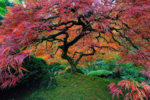D
Deleted member 21616
Guest
Hi All,
I know this is not bonsai, but I'm confident this is the best place to get help
I have reserved a field-grown inaba shidare (2-3 feet tall), which I will be picking up in April. I will be planting it in the ground (either right away or eventually, see below) in my yard, in Montreal. I was told this species does well in the ground in our climate.
Question: I would like to develop "nebari" and thicken the trunk in general of this tree. Many inaba shidare trees that I have seen stand on a straight, skinny, 6 foot pole, which I don't like. Any tips or tricks?
I thought of screwing it down to a tile and planting it in a pot for 1-2 years as we do with bonsai?
Thank you!
Derek
I know this is not bonsai, but I'm confident this is the best place to get help
I have reserved a field-grown inaba shidare (2-3 feet tall), which I will be picking up in April. I will be planting it in the ground (either right away or eventually, see below) in my yard, in Montreal. I was told this species does well in the ground in our climate.
Question: I would like to develop "nebari" and thicken the trunk in general of this tree. Many inaba shidare trees that I have seen stand on a straight, skinny, 6 foot pole, which I don't like. Any tips or tricks?
I thought of screwing it down to a tile and planting it in a pot for 1-2 years as we do with bonsai?
Thank you!
Derek

